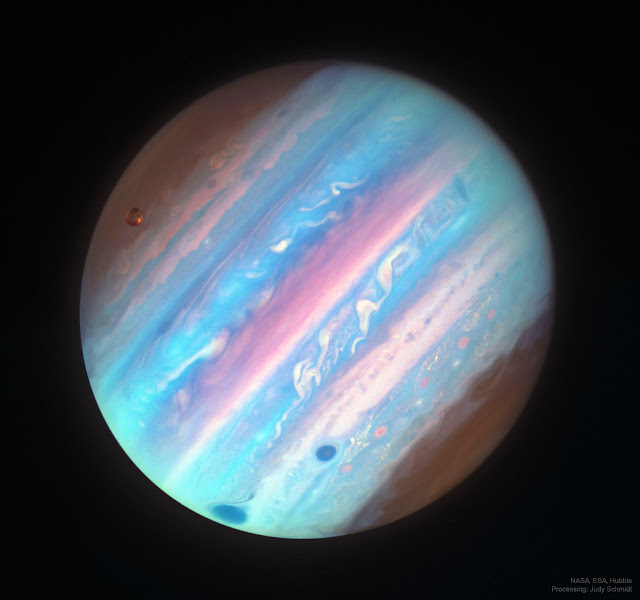NASA PhotoNews: Comet, Clusters and Nebulae
 |
| NASA PhotoNews: Comet, Clusters and Nebulae |
Explanation: Bright enough for binocular viewing Comet 21P / Giacobini-Zinner stands out, even in this deep telephoto mosaic of the star cluster and nebula rich constellation Auriga the Charioteer. On the night of September 9 its greenish coma and diffuse tail contrast with the colorful stars and reddish emission nebulae in the almost 10 degree field of view along the Milky Way. The comet was near its perihelion and closest approach to Earth, about 200 light-seconds away. Riding across the distant background just above the comet's tail are well-known Auriga star clusters M38 (left of center) and M36 (toward the right) about 4,000 light-years away. At the top left, emission region IC 405 is only 1,500 light-years distant, more dramatically known as the Flaming Star Nebula. To its right lies IC 410, 12,000 light-years away and famous for its star-forming cosmic tadpoles. A child of our Solar System Giacobini-Zinner is a periodic comet orbiting the Sun once every 6.5 years, and the parent body of October's Draconids meteor shower.
===
#NASA #space #photonews
18.09.13





Erläuterung:Hell genug für binokulare Betrachtung Comet 21P / Giacobini-Zinner zeichnet sich auch in diesem tiefen Telephoto-Mosaik des Sternhaufens und des nebelfleckigen Sternbildes Auriga the Charioteer aus. In der Nacht zum 9. September kontrastieren sein grünliches Koma und sein diffuser Schwanz mit den bunten Sternen und rötlichen Emissionsnebeln im fast 10-Grad-Sichtfeld entlang der Milchstraße. Der Komet befand sich in der Nähe seines Perihels und war ungefähr 200 Lichtsekunden von der Erde entfernt. Über den fernen Hintergrund direkt über dem Kometenschwanz reiten die bekannten Auriga-Sternhaufen M38 (links von der Mitte) und M36 (nach rechts) etwa 4.000 Lichtjahre entfernt. Links oben ist der Emissionsbereich IC 405 nur 1.500 Lichtjahre entfernt, dramatischer als Flaming Star Nebula bekannt. Rechts davon liegt IC 410, 12, 000 Lichtjahre entfernt und berühmt für seine sternbildenden kosmischen Kaulquappen. Ein Kind unseres Sonnensystems Giacobini-Zinner ist ein periodischer Komet, der alle 6,5 Jahre die Sonne umkreist, und die Mutter des Draconiden-Meteorschauers im Oktober.
ReplyDeleteThanks for your information! )
Delete